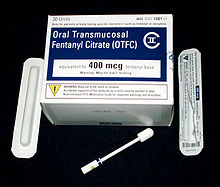Actiq (Fentanyl Citrate) 400mcg OTFC Lozenges
$13.00
Actiq (Fentanyl Citrate) 400mcg lollipops/lozenges:
Actiq (Fentanyl Citrate) treats severe, ongoing pain that cannot be controlled with other medicines. This medicine is a narcotic pain reliever.
You can buy Actiq lollipops online Fentanyl Citrate 400mcg lozenges without prescription (No RX).
product price is as: per stick (lollipop)
Minimum order quantity is: 30 sticks (lollipops / lozenges)
Cancer-related pain is a common clinical problem, experienced by ∼90% of patients with cancer.1 The mainstay of treatment remains opioids and the WHO analgesic ladder. Following the principles of the analgesic ladder, 80% of patients can achieve pain control.2 However, breakthrough pain remains a form of cancer-related pain that is particularly difficult to manage in both specialist and generalist settings. The focus of this article is the mismatch between the temporal characteristics of the majority of cancer-related breakthrough pain which is fast onset and resolution, with the pharmacological profile of oral morphine. Buy Actiq (Fentanyl Citrate) 400mcg OTFC Lozenges Online.
Breakthrough pain has been defined as ‘a transient exacerbation of pain that occurs either spontaneously or in relation to a specific predictable or unpredictable trigger, despite relatively stable or adequately controlled background pain’.3 Breakthrough pain in a common phenomenon,4,5 which can result in significant negative impact on a patient’s quality of life.6
The typical episode of breakthrough pain is of high intensity, rapid onset and short duration (mean of 30 min). This fits poorly with the pharmacology of short-acting opiates, such as immediate release morphine,7 which has a peak time to onset of 30–40 min and mean duration of effect of 4 h.8 This discrepancy between pain episode and traditional treatment can leave the patient with poorly treated breakthrough pain, undesirable effects of opioid after the pain episode has passed and ultimately loss of confidence in prescribed medications.
The pharmacology of fentanyl lends itself well to these short-lived breakthrough episodes. The duration of action is shorter at 1–3.5 h9 and the ability to produce transmucosal and nasal formulations, thus reducing first pass metabolism, allow rapid onset of action in the region of 5–10 min.
Related products
PAIN KILLERS
PAIN KILLERS
PAIN KILLERS
MEN'S HEALTH
PAIN KILLERS
PAIN KILLERS
PAIN KILLERS











